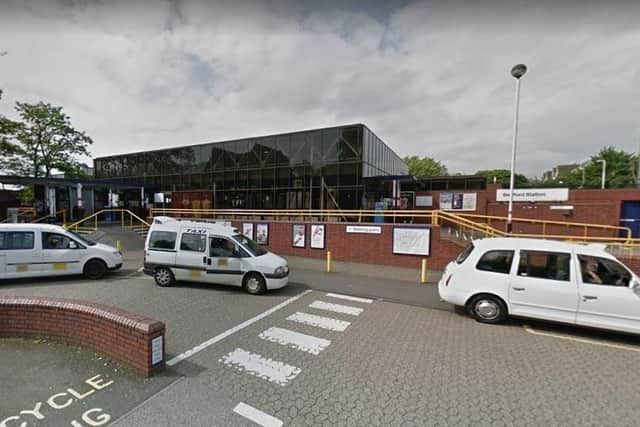Passenger numbers down at Bedford's railway stations as more stay at home
and live on Freeview channel 276
Passenger numbers were down at Bedford' s railway stations last year as more people stayed at home during the coronavirus pandemic, figures show.
Statistics from the Office of Rail and Road (ORR) show an estimated 878,000 passengers used Bedford's three stations in 2020-21.
Advertisement
Hide AdAdvertisement
Hide AdThis was 78 per cent fewer than in 2019-20, when 4.1 million travelled on trains in the area.


The busiest station was Bedford, which saw 837,000 entries and exits by passengers.
However, this was down from 3.9 million the year before, and the lowest number of passengers since comparable records began in 1997.
This was followed by Bedford St John's, with 39,000, and Kempston Hardwick, which saw 1,770 passengers use the station.
Advertisement
Hide AdAdvertisement
Hide AdAcross Great Britain, usage of railway stations fell from 3 billion in 2019-20 to 687 million – a fall of 77 per cent.
The busiest station in England – with an estimated 14 million passengers – was Stratford, in London, marking the first time in 17 years that Waterloo was not the most-used.
The figures are based primarily on ticket sales.
ORR director of planning and performance Feras Alshaker said: “We’ve seen a radical change, especially in London, in the stations people were using the most.
“Stratford, Highbury and Islington, Clapham Junction, Barking and East Croydon replaced King's Cross, St Pancras, Euston and Paddington in the top 10, underlining their importance as vital stops and interchanges, linking key workers with Underground and bus services to travel.
Advertisement
Hide AdAdvertisement
Hide Ad“This year we have seen many railway stations with very few passenger entries and exits.
"However, we know that recent figures show leisure journeys are nearly back to pre-pandemic levels, while there has been a slower increase in commuter journeys.”
Six stations had no passengers in 2020-21, mainly due to services being suspended because of the coronavirus crisis.
They were Abererch, Gwynedd; Beasdale, Highland; Llanbedr, Gwynedd; Sampford Courtenay, Devon; Stanlow and Thornton, Cheshire; and Sugar Loaf and Powys.
Advertisement
Hide AdAdvertisement
Hide AdAndy Bagnall, director-general at industry body the Rail Delivery Group, said: “The station usage figures show how the rail industry kept people moving for the first year of the pandemic.
“Some of the entries on the list reflect where people like key workers were travelling from and also the acceleration of changes to how people are travelling after the pandemic.
“Rail companies are working together to welcome people back and the recent increase in passengers continues to both reflect and support the nation’s recovery.”
Separate figures from a YouGov poll of 56,000 adults show 51 per cent of Britons think their local train services are very good or fairly good.
In the East of England, 53 per cent of people surveyed said the same.